Guest post by Oliver Tostmann, The Wadsworth Atheneum
This late September, the Wadsworth Atheneum Museum of Art in Hartford, Connecticut, will present By Her Hand: Artemisia Gentileschi and Women Artists in Italy, 1500–1800. The exhibition, co-organized with the Detroit Institute of Arts, showcases a dazzling selection of about sixty paintings, pastels, and drawings by Italian women artists from Sofonisba Anguissola (1535–1625) to Rosalba Carriera (1673–1757). Drawn from collections in Europe, the United States, and Canada, it will provide a superb opportunity to discover, explore, and reassess a group of works, ranging from the iconic to the little known.
Many works have never been shown to the public before; others, such as the recently rediscovered Mary Magdalene in Ecstasy by Artemisia Gentileschi (1593–1654, or later), will be exhibited for the first time in the United States.
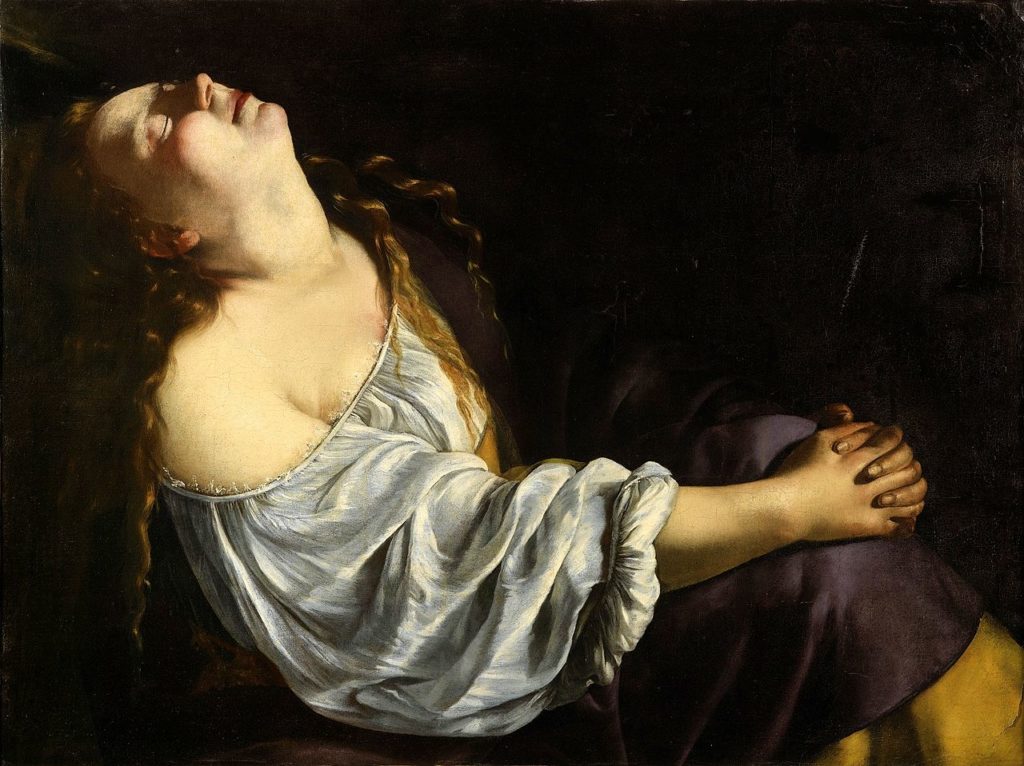
A rare breed of exhibition for US art museums
For the Wadsworth Atheneum, this exhibition is a premier. Despite being founded in 1842 and one of the oldest art museums in the country, this is its first exhibition dedicated to historic women artists. It comes at a time when many public museums with encyclopedic collections are rethinking their collection display, acquisitions, and programming. While buying works of art by women artists has become something of a trend recently, it may come as a surprise that larger exhibitions on historic women artists are still rare in this country. There hasn’t been a large-scale exhibition of early modern Italian women artists in the US since 2007, when the National Museum for Women in the Arts in Washington D.C. presented Italian Women Artists from Renaissance to Baroque. Since then, our understanding of the subject has significantly expanded, and the place of women artists in public art collections has shifted notably.
Artemisia Gentileschi as a focal point
By Her Hand focuses on works by Artemisia Gentileschi, who will be represented with seven paintings ranging from her early to late career. Despite her relatively recent re-ascent to stardom, there are still many open questions regarding her practice and proper place in the history of art. The exhibition centers on her Self-Portrait as a Lute Player, a painting that was acquired by the Wadsworth only in 2014.
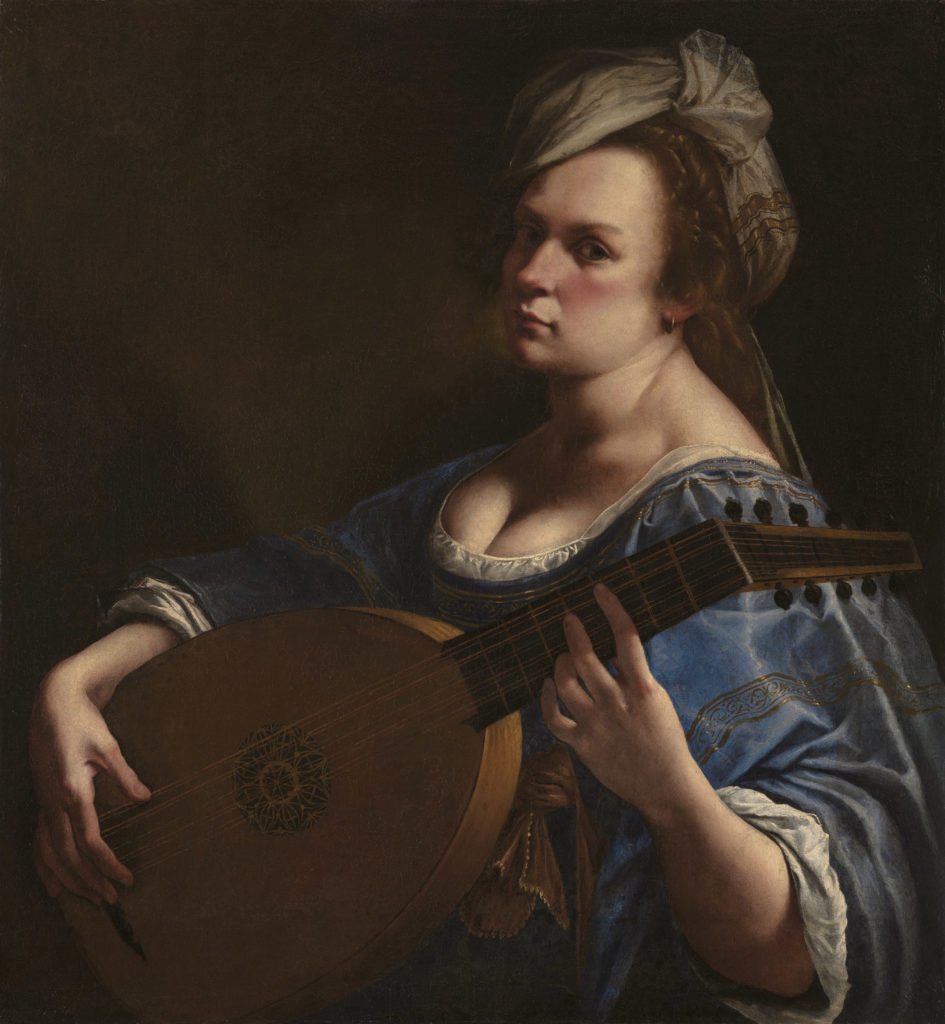
Since its arrival, the portrait has played a pivotal role in the galleries and set a counterpoint to the renowned, yet all male, collection of Baroque art from Italy. It especially resonates with Judith and her Maidservant and the Head of Holofernes, one of the highlights of the collection, painted by Artemisia’s father Orazio Gentileschi (1563–1639).
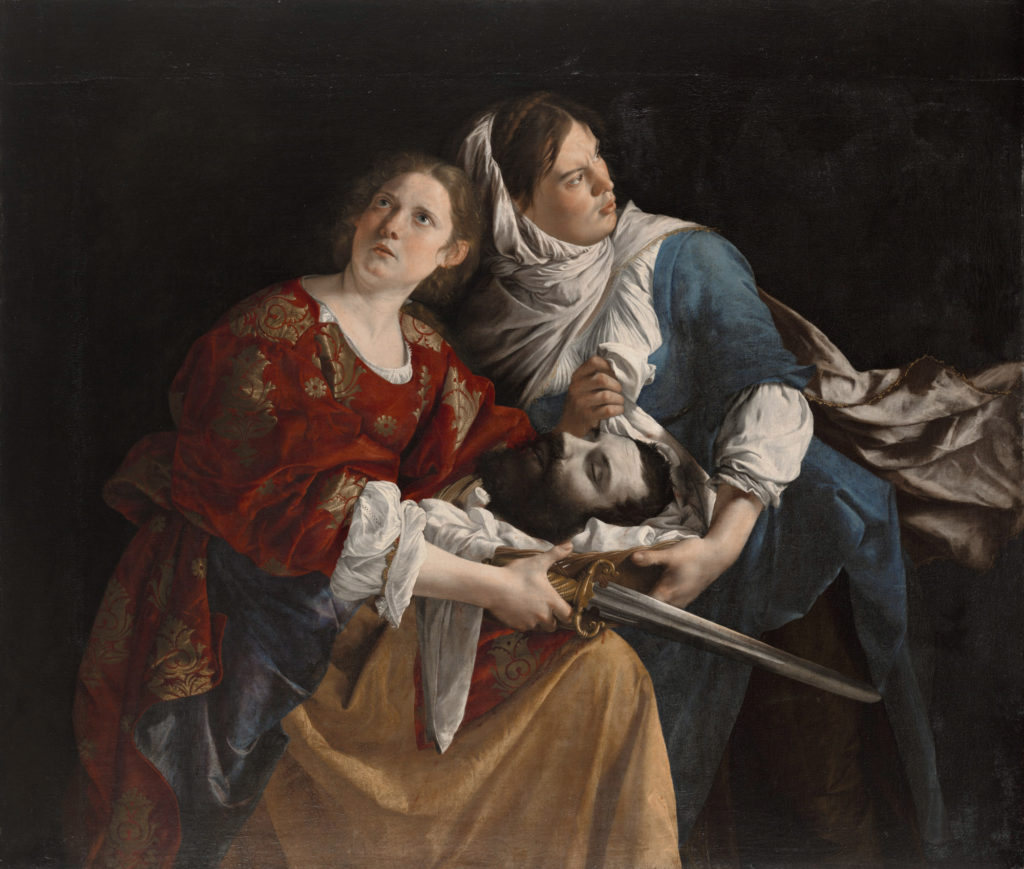
Women artists at the Wadsworth: Some history
With the acquisition of Self-Portrait under the directorship of Susan Talbott, the Wadsworth continued a tradition that reaches back to the 1930s and 1940s when the legendary director A. Everett “Chick” Austin made numerous daring purchases of Baroque art, most notably Caravaggio’s now famous Saint Francis of Assisi in Ecstasy. Austin built one of the strongest collections of Baroque art in the United States, and women artists were included in his vision. In 1942, he purchased an impressive Italian still life believed to be by then little-known Lombard artist Fede Galizia (1578–1630).
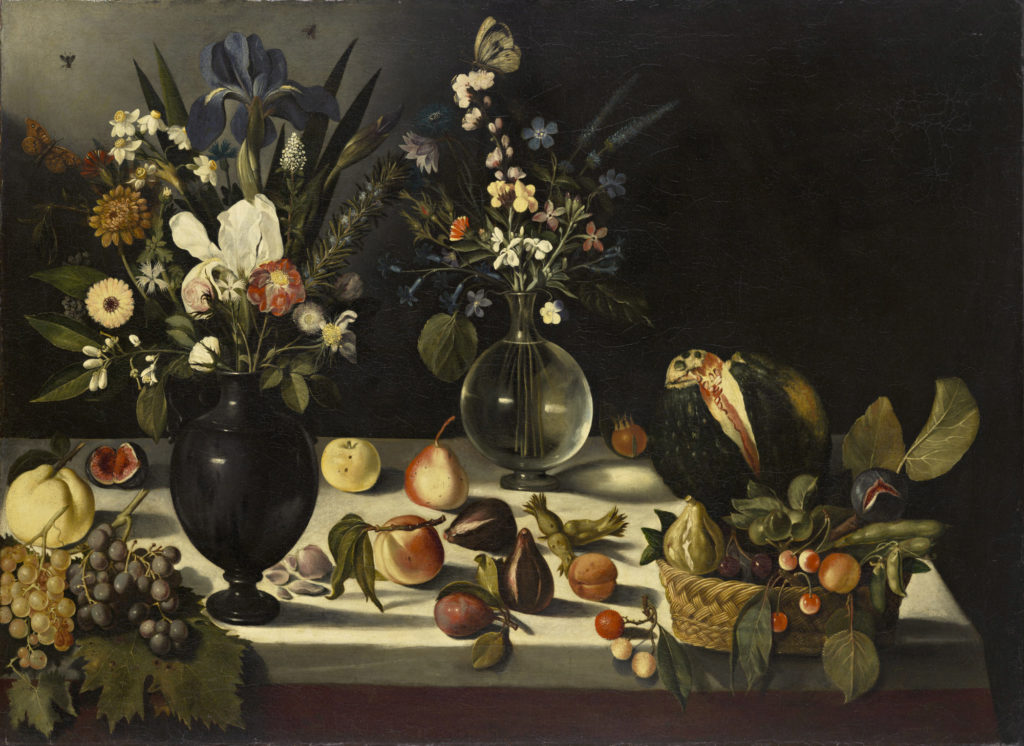
Adorned with an attribution by the art historian Wilhelm Suida, Austin bought the painting for the significant price of $2,500, making it one of the costliest museum acquisitions by any woman artist at the time. Lent frequently throughout the 1940s and into the 1960s as a work by Fede Galizia, it became one of the best-known paintings by the Milanese painter in the United States. Since then, the enigmatic work underwent various ascriptions and is now given to the so-called “Master of the Hartford Still Life.” Although a single work that was later reattributed, this acquisition speaks to the Wadsworth’s willingness to pursue an unconventional path.
From acquisition to exhibition: A personal-professional journey
I assisted in acquiring Gentileschi’s Self-Portrait by researching it thoroughly, during which time my admiration for Gentileschi and her work grew exponentially. Even so, I failed to anticipate the invigorating effect it would have on visitors. In my experience, there has been no other recent acquisition in our collection that has stirred emotions and reactions to such a degree. Comments about the painting have ranged from unrestrained enthusiasm to sniffy skepticism about the painting’s quality and place in history. To this day, I am surprised by the dissonant, yet passionate responses. The portrait continues to rouse excitement, curiosity, and the thirst to learn more about the artist. This fascination has urged me to contextualize the painting in an exhibition, an impulse that eventually led to By Her Hand, which I am co-curating with Eve Straussman-Pflanzer (National Gallery of Art). Eve was formerly the curator of European Art at the Detroit Institute of Arts. Its fantastic Judith by Artemisia Gentileschi will be one of the highlights in our show.
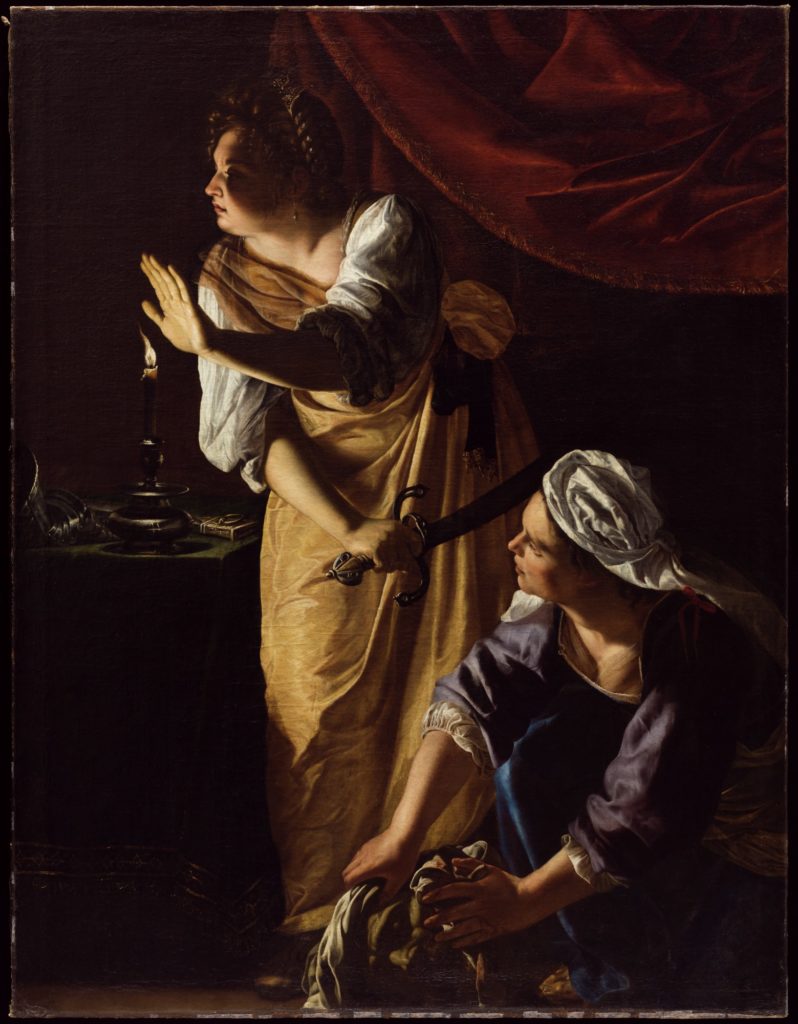
Women artists played a marginal role during my traditional education in art history, and stints at the National Gallery of Art in Washington D.C. and the Isabella Stewart Gardner Museum in Boston did not cause me to rethink the role and proper place of women artists in public collections. It was only after my arrival at the Wadsworth that I began to question my assumptions about art history and realize the urgent need to add women artists to museum collections. This is in part because of Gentileschi’s Self Portrait As A Lute Player. Several months after my arrival in Hartford, I was told of the opportunity to purchase the painting and asked to evaluate its possible acquisition. Thinking back, I feel extraordinarily lucky to have stumbled into this task, because it helped to expand my notion of the canon and led to the exhibition By Her Hand.
Artemisia and self-portraiture
As I said above, Gentileschi’s Self-Portrait will be the centerpiece of By Her Hand. It will be juxtaposed with the recently rediscovered Self-Portrait as Saint Catherine (National Gallery, London) as well as with her Saint Catherine of Alexandria (Gallerie degli Uffizi, Florence).
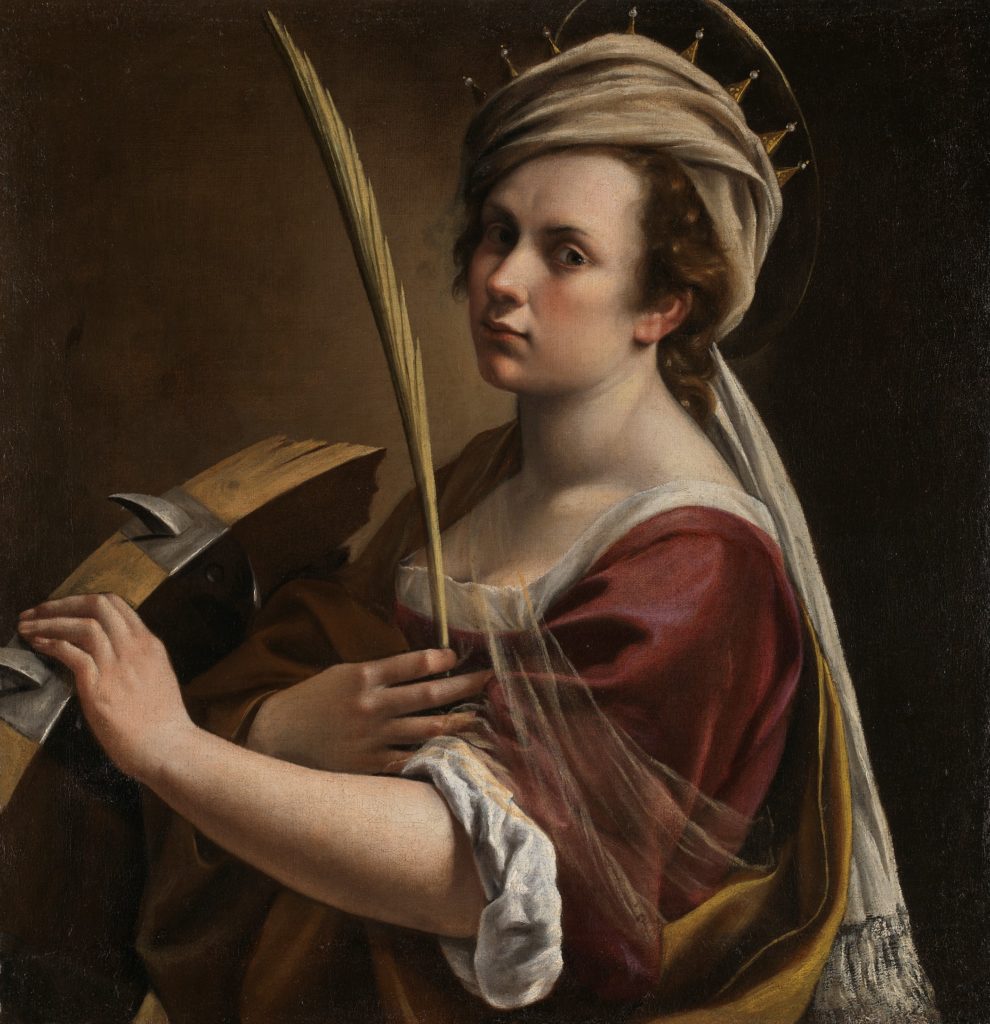
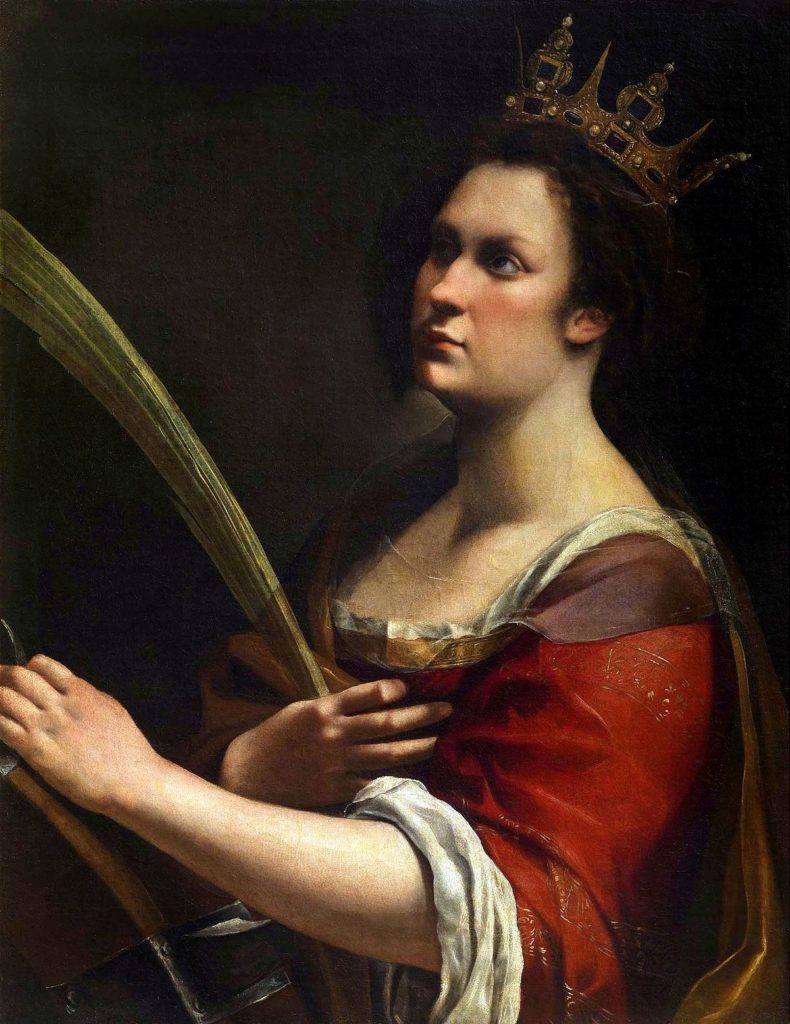
These three works were painted while Gentileschi lived in Florence, probably between 1615 and 1617, a crucial period of Artemisia’s career. Similar poses and formats are used in all three paintings and provide fascinating insights into Artemisia’s working methods. In fact, as recent technical examinations make clear, she started all three paintings as self-portraits, modifying two of them into portraits of saints along the way. While the exact sequence is still unknown, it is possible that she worked at all three paintings simultaneously, moving back and forth from one painting to another. Artemisia explored her own likeness to different degrees in each painting, a quest that illustrates her interest in self-representation. Numerous other women artists depicted themselves as well, and one question is: whether or to what degree Artemisia may have been inspired by her female predecessors. As our exhibition will make clear, the genre of self-portraiture underwent significant changes among women artists from the mid-sixteenth to the mid-eighteenth century.
Self-portraits by Italian women artists before Artemisia, and after
The first and arguably most influential artist in this genre was Sofonisba Anguissola. We do not know whether Artemisia Gentileschi knew about Anguissola, but it is quite possible that, at the least, she had heard about the legendary self-portraits of the Cremonese artist. Anguissola painted numerous portraits that were sent to prospective patrons across Italy that were intended to foster her emerging career. It was Ann Sutherland Harris who remarked that Anguissola painted more self-portraits than any artist, male or female, in between Albrecht Dürer and Rembrandt. At the upcoming exhibition, we will present a selection of Anguissola’s portraits, including her famous self-portrait from the Museum of Fine Arts in Boston.
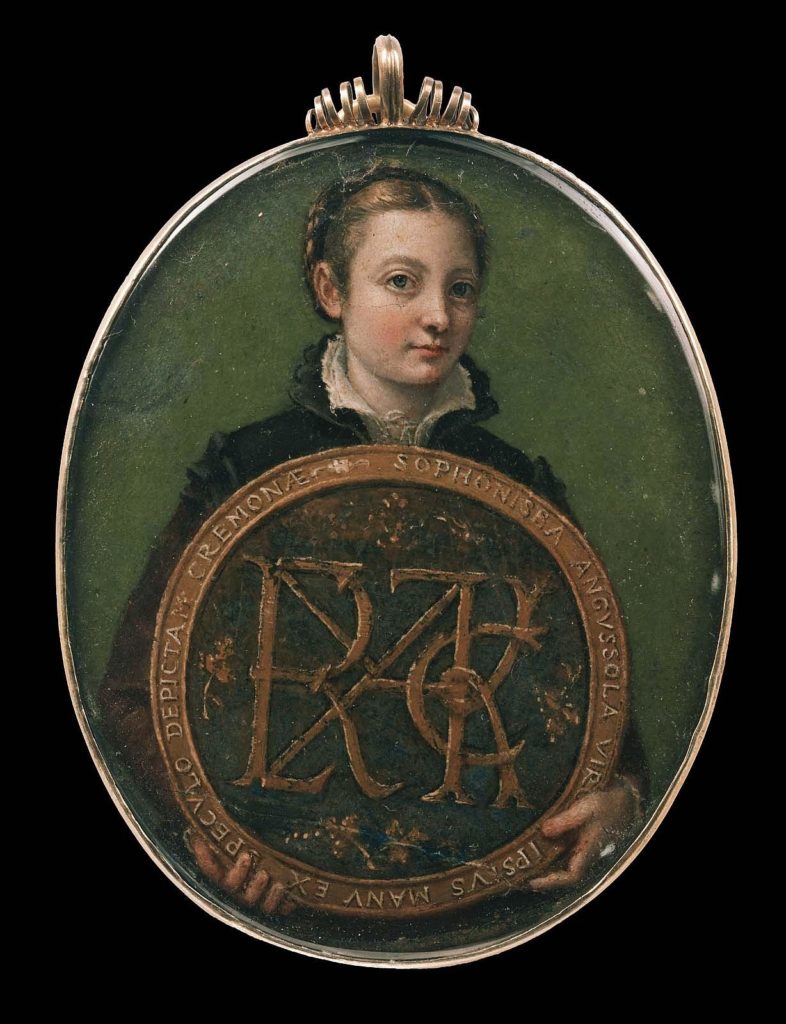
Anguissola’s self-portraits were pathbreaking. They intrigue us today as they suggest erudition and accomplished training balanced by the youthful physique of the sitter, a striking formula that was emulated by other female artists of the following generations.
It took time, however, until women in Italy were able to move away from this mode of idealized youth and depict themselves throughout various stages of their lives, including maturity. In By Her Hand, we will present Anna Bacherini Piattoli’s (1720–1788) daring Self-Portrait as the chronological bookend of the show. Marked by the imprint of time, the artist presents herself as the mature woman that she was in her mid-fifties working on a miniature.

Inventive, skillful, daring: Discover the women artists of early modern Italy
In between the lifespans of Anguissola and Bacherini Piattoli, norms and expectation regarding female self-representation evolved dynamically. Parallel to this evolution, an ever-increasing number of women practiced as professional artists. In By Her Hand, we will explore these developments to provide an overview of popular subjects, media, and professional trajectories of early modern Italian women artists. It will become clear how inventive, skilled, and daring Artemisia Gentileschi and other women artists have been practicing in Italy from the 1500s to the 1800s. I heartily invite you to celebrate these artists during the next months in Hartford.
Oliver Tostmann is the Susan Morse Hilles Curator of European Art at the Wadsworth Atheneum Museum of Art in Hartford, Connecticut. Prior to joining the Wadsworth, Tostmann was the William Poorvu Curator of the Collection at the Isabella Stewart Gardner Museum in Boston. Previously, Tostmann was a fellow in the department of Italian and Spanish paintings at the National Gallery of Art in Washington, D.C. A recipient of research grants and fellowships from the Andrew W. Mellon Foundation, Joseph F. McCrindle Foundation, and the Senate of Berlin, Tostmann has written articles and delivered lectures on many topics in European history and literature. He received his Dr. phil., M.A. and B.A. in art history from the Freie Universität, Berlin. He also studied at Humboldt Universität Berlin, Université de Paris I, and Scuola Normale Superiore, Pisa.
By Her Hand: Artemisia Gentileschi and Women Artists in Italy, 1500–1800 opens at the Wadsworth on September 30, 2021. The show will feature works by Sofonisba Anguissola, Diana Scultori, Lavinia Fontana, Fede Galizia, Isabella Catanea Parasole, Artemisia Gentileschi, Orsola Maddalena Caccia, Giovanna Garzoni, Anna Maria Vaiani, Elisabetta Sirani, Ginevra Cantofoli, Rosalba Carriera, Marianna Carlevarijs, Veronica Stern, and Anna Bacherini Piattoli. After it closes at the Wadsworth on January 6, 2022, By Her Hand moves to the Detroit Institute of Arts, where it is scheduled to open on February 6 and run until May 29, 2022.
More Art Herstory blog posts about Renaissance and Baroque Italian women artists:
Sofonisba Anguissola: Portraitist of the Renaissance at Rijksmuseum Twenthe, by Nelleke de Vries
Judith’s Challenge, from Lavinia Fontana to Artemisia Gentileschi, by Alessandra Masu
Stitching for Virtue: Lavinia Fontana, Elisabetta Sirani, and Textiles in Early Modern Bologna, by Dr. Patricia Rocco
Thoughts on By Her Hand, the Hartford Iteration, by Erika Gaffney
The Restoration of Royalty: Lavinia Fontana’s Queen of Sheba and King Solomon, by Dr. Aoife Brady
Sister Eufrasia Burlamacchi (Lucca, 1478–1548), by Dr. Loretta Vandi
Giovanna Garzoni’s Portrait of Zaga Christ (Ṣägga Krǝstos), by Dr. Alexandra Letvin
Celebrating Bologna’s Women Artists, Guest post by Dr. Babette Bohn
Lavinia Fontana and Elisabetta Sirani at the Smith College Art Museum, by Dr. Danielle Carrabino
Elisabetta Sirani of Bologna (1638–1665), Guest post by Dr. Adelina Modesti
“I feel again the violence of a curious desire”: Rare client testimonies on Rosalba Carriera’s erotic art, Guest post by Dr. Angela Oberer
Lavinia Fontana: Italy’s First Female Professional Artist, Guest post by Dr. Elizabeth Lev
Plautilla Bricci (1616–1705): A Talented Woman Architect in Baroque Rome, Guest post by Dr. Consuelo Lollobrigida
Two of a Kind: Giovanna Garzoni and Artemisia Gentileschi, Guest post by Dr. Mary D. Garrard
Sister Caterina Vigri (St. Catherine of Bologna) and “Drawing for Devotion,” Guest post by Dr. Kathleen G. Arthur
Orsola Maddalena Caccia (1596–1676), Convent Artist, Guest post by Dr. Angela Ghirardi
Rediscovering the Once Visible: Eighteenth-Century Florentine Artist Violante Ferroni, Guest post by Dr. Ann Golob
Renaissance Women Painting Themselves, Guest post by Dr. Katherine McIver
The Priceless Legacy of Artemisia Gentileschi: A Curator’s Perspective, by Dr. Judith W. Mann
More Art Herstory blog posts about exhibitions of work by Italian women artists:
Roma Pittrice: Women Artists at Work in Rome Between the Sixteenth and Nineteenth Centuries, by Alessandra Masu
Plautilla Bricci: A Painter & “Architettrice” in Seventeenth-century Rome, by Alessandra Masu
Thoughts on Feminist Art History in the Wake of Artemisia: Vrouw & Macht at Rijksmuseum Twenthe, by Dr. Jitske Jasperse
In defense of monographic exhibitions of female artists: The case of Fede Galizia, by Camille Nouhant
The Ladies of Art are in Milan, by Dr. Cecilia Gamberini
“Artemisia” at the National Gallery: A Review, by Dr. Sheila McTighe
Artemisia Gentileschi: What Wasn’t in the London Exhibition and Why it Matters, by Dr. Jesse Locker
A Tale of Two Women Painters (Guest post / exhibition review by Natasha Moura)


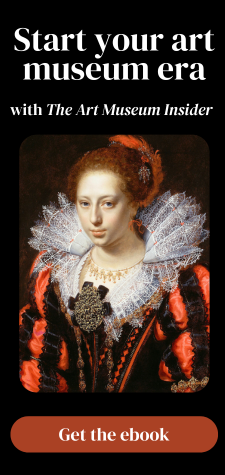

Visited the Wadsworth Atheneum on Friday, 10th of December, 2021 and was amazed at the collection by women artists. My main reason for seeing it was for Artemisia Gentileschi’s work. However, all the paintings on exhibit were breathtaking and exhibited such rich color.
Wonderful that you were able to see the show! What an amazing opportunity for all of us.